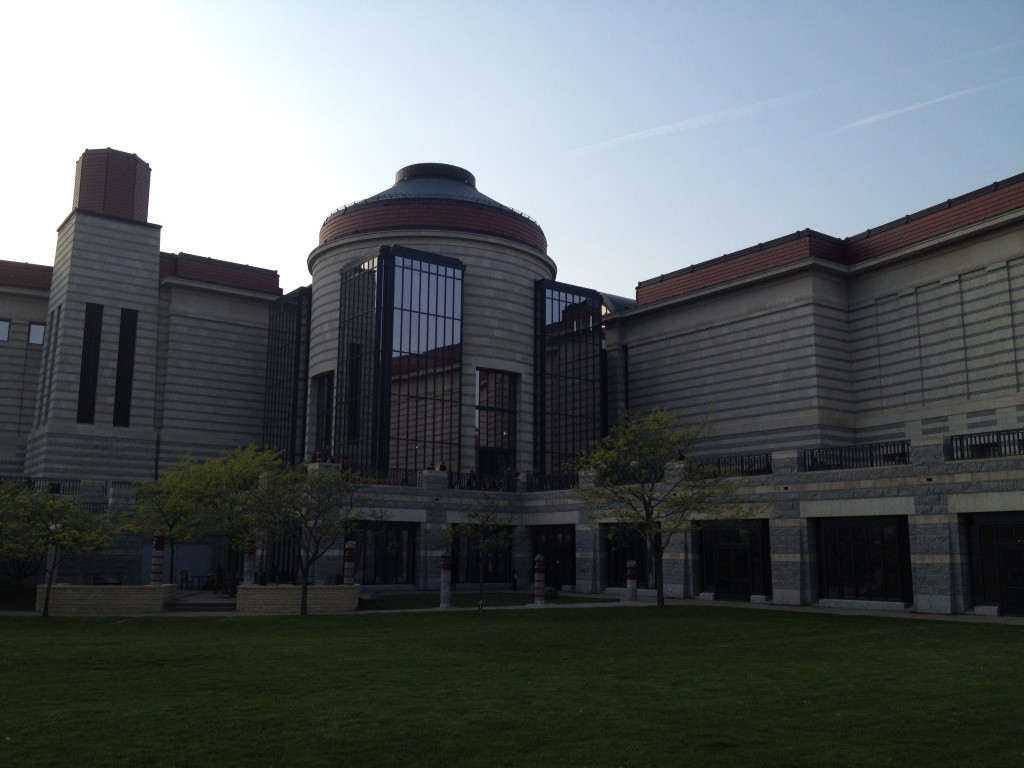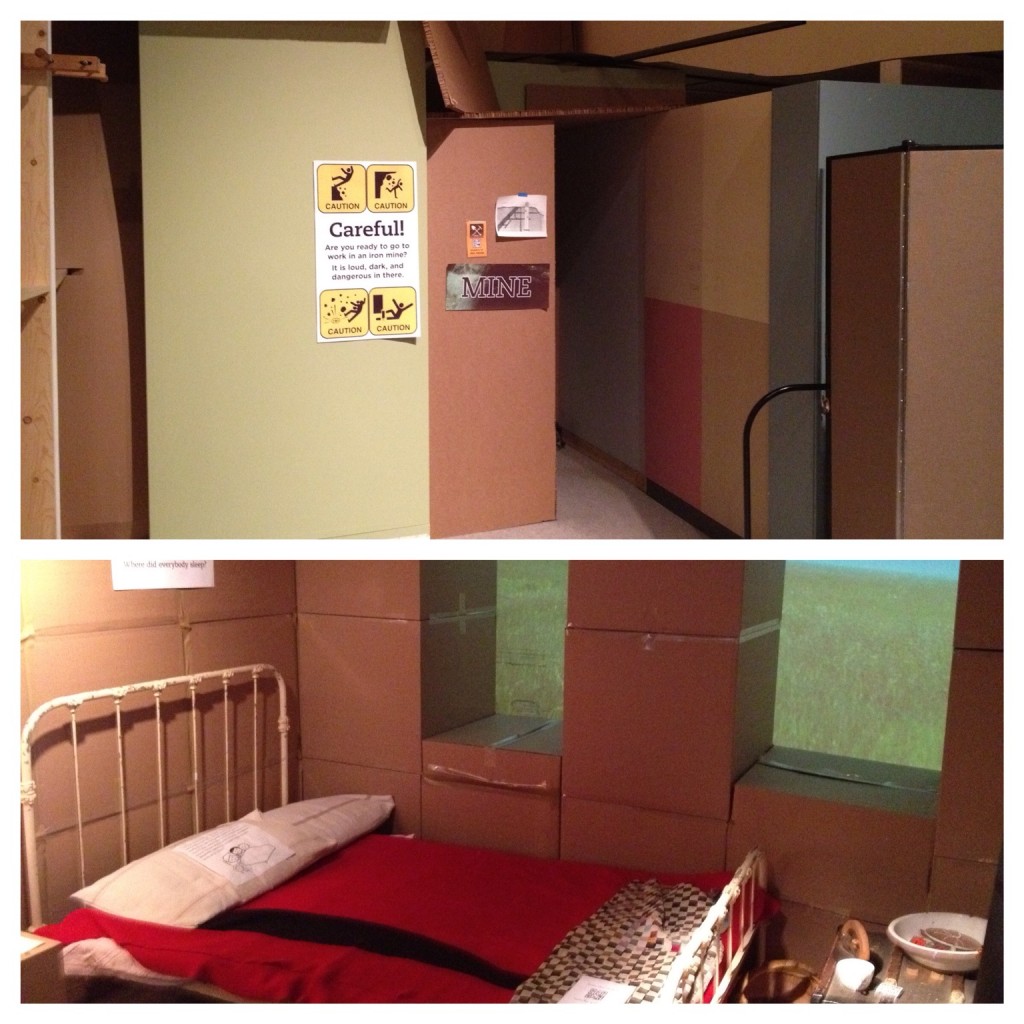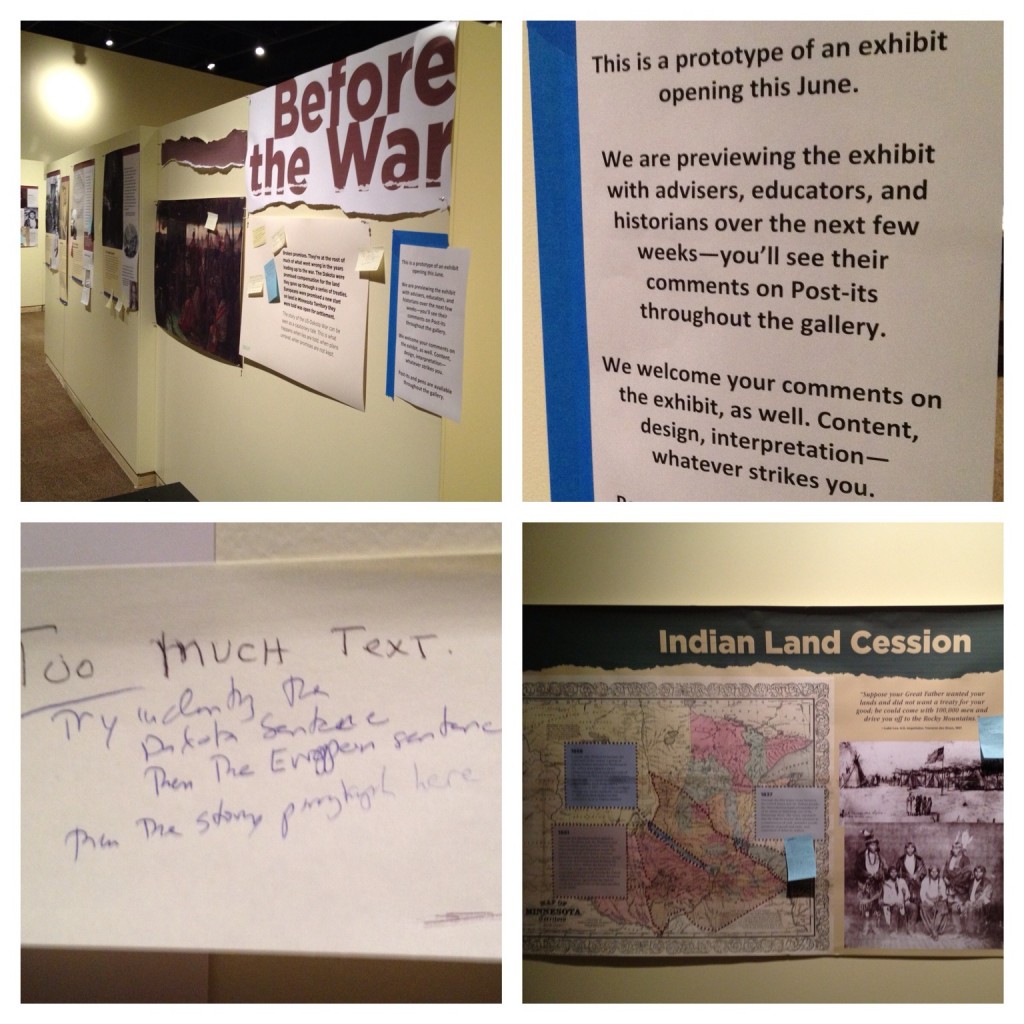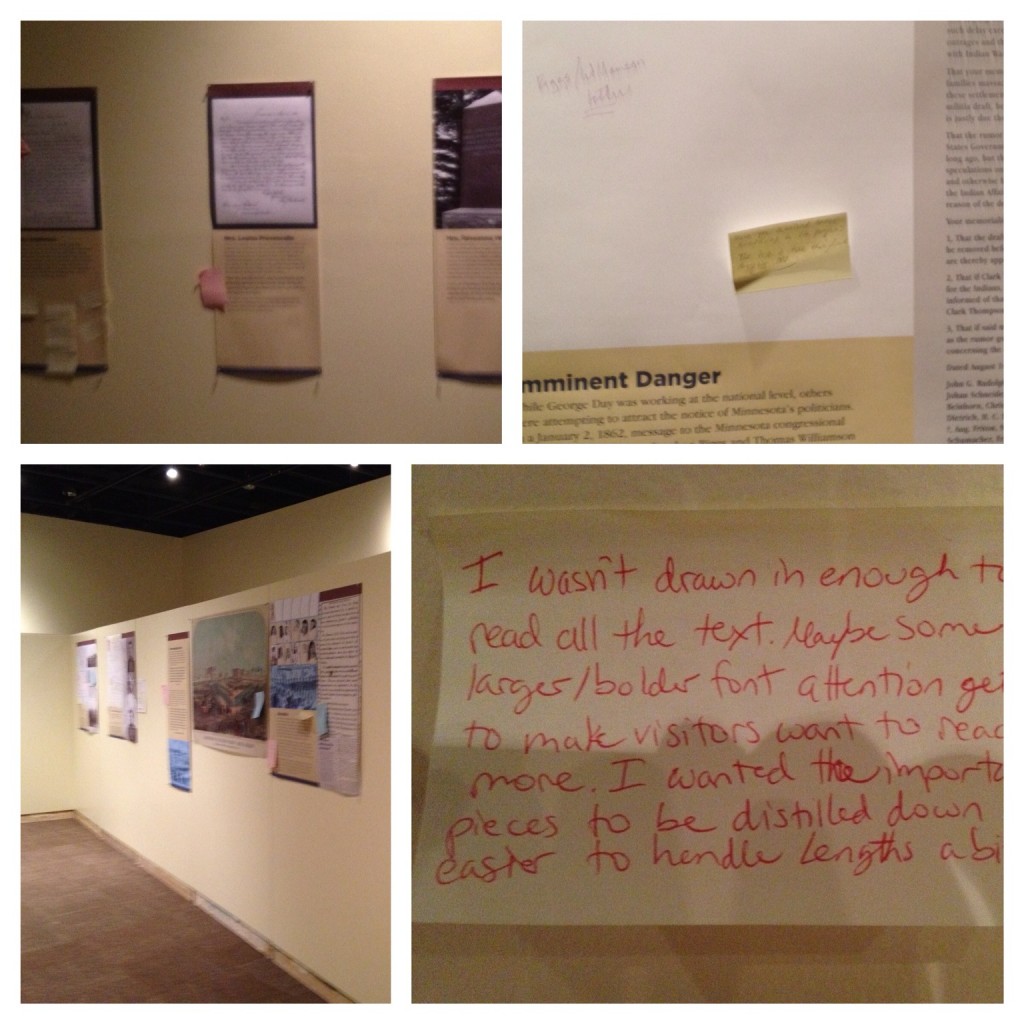While visiting the Minnesota History Center during the 2012 American Association of Museum’s conference, I was lucky to see exceptional museum exhibition evaluation at work, and participate in two very unique prototyping experiences.
 One experience was an incredibly tech-forward exhibition being planned called Our Minnesota, that will use iPods, QR codes, and immersive environments to tell the story of settlers arriving in Minnesota. The QR code integration was quite impressive as it provided opportunities for game based learning. What was more impressive was the use of cardboard boxes to create large scale environments that recreated huts and mines. It’s so hard to prototype a three-dimensional environment, but the exhibitions crew at MHC managed to accomplish a nice blend of real and box to give visitors a sense of what the exhibit might be like in the end. I felt a little like being a visitor to Caine’s Arcade, and visitors were just as interested in what was going on as if it were the real exhibition.
One experience was an incredibly tech-forward exhibition being planned called Our Minnesota, that will use iPods, QR codes, and immersive environments to tell the story of settlers arriving in Minnesota. The QR code integration was quite impressive as it provided opportunities for game based learning. What was more impressive was the use of cardboard boxes to create large scale environments that recreated huts and mines. It’s so hard to prototype a three-dimensional environment, but the exhibitions crew at MHC managed to accomplish a nice blend of real and box to give visitors a sense of what the exhibit might be like in the end. I felt a little like being a visitor to Caine’s Arcade, and visitors were just as interested in what was going on as if it were the real exhibition.
 The second prototyping experience was with a text-based exhibition. The MHC put walls up, and simulated the entire exhibition and let evaluators (including cultural advisers) make comments about particular text panels and info graphics. This is an astounding move towards making exhibition text more inclusive, and I have to applaud the curators of the exhibition for taking the risk and letting others comment on their work to make it more accessible. Evaluators (including us outside AAM folks) were able to take a stack of post-it notes and make comments along our path. I found this to be one of the most interesting evaluation experiences, because how you navigate a space and read is different than how you read on a screen or on paper. There is no comparison between track changes on a Word doc and being there.
The second prototyping experience was with a text-based exhibition. The MHC put walls up, and simulated the entire exhibition and let evaluators (including cultural advisers) make comments about particular text panels and info graphics. This is an astounding move towards making exhibition text more inclusive, and I have to applaud the curators of the exhibition for taking the risk and letting others comment on their work to make it more accessible. Evaluators (including us outside AAM folks) were able to take a stack of post-it notes and make comments along our path. I found this to be one of the most interesting evaluation experiences, because how you navigate a space and read is different than how you read on a screen or on paper. There is no comparison between track changes on a Word doc and being there.

 So Minnesota Museum of History, I applaud you. I hope that the evaluation works, and I hopefully (fingers crossed) we can try this out at the Rubin Museum.
So Minnesota Museum of History, I applaud you. I hope that the evaluation works, and I hopefully (fingers crossed) we can try this out at the Rubin Museum.


